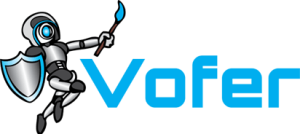Website Design
In today’s digital age, a company’s website is a crucial touchpoint for customers and a key element in reinforcing brand identity. To achieve this, it’s essential to harmoniously blend your brand into every aspect of your website. Introducing our comprehensive Website Design, Logo, and Branding Services, specifically tailored to create a unique and unforgettable digital presence for your business.
Our wide-ranging solutions encompass captivating website design, attention-grabbing logo development, consistent branding strategies, and responsive design that guarantees a smooth and engaging user experience across various devices.

Creating your Brand
Empowering Connections & Inspiring Growth
01
Logo Design
Following best practices that ensure a memorable and timeless brand identity is essential to design an effective logo. Research the target audience and industry to gain insights into the desired look and feel. Keep the design simple, versatile, and adaptable, as this will help your logo stand out in various sizes and formats.
Choose colors that evoke the right emotions and pair them with a complementary, easily readable typeface. Avoid using too many fonts, colours, or complex shapes, as this can make the logo appear cluttered. Incorporate elements that convey the brand’s story, values, and personality while striving for a unique, creative design that stands out from competitors.
02
Slogan or Tagline
To create an impactful slogan or tagline, follow best practices that result in a memorable and meaningful expression of your brand. Begin by understanding your target audience, brand values, and unique selling proposition to create a message that resonates with your audience and distinguishes you from competitors.
Keep the slogan short, concise, and easy to remember, with a focus on using simple yet powerful language. Aim for a timeless quality, avoiding trendy phrases or jargon that may become dated quickly.
Use evocative words that elicit emotions and create a strong connection with your audience. Ensure the tagline is versatile and can be used across different platforms and mediums, maintaining consistency with your brand identity.
03
Colour Palette
To establish an effective colour palette, adhere to best practices that ensure a visually appealing and cohesive brand identity. Start by understanding the psychological effects of colors and how they relate to your target audience and industry.
This will help you select colours that evoke the desired emotions and associations. Limit your palette to a few core colors, typically consisting of a primary color and one or two secondary or accent colors (Contrast or Complement Primary), to maintain consistency and avoid visual clutter.
Incorporate a balance of complementary and contrasting colours that harmonize well together and reinforce your brand’s personality. Consider accessibility by ensuring proper colour contrast for readability and inclusivity, taking into account individuals with color vision deficiencies.
04
Typography
To employ effective typography, follow best practices that ensure legibility, visual appeal, and cohesive brand identity. Begin by researching typefaces that align with your brand’s personality and the preferences of your target audience. Choose a limited number of complementary fonts, typically one for headings and another for body text, to maintain consistency and avoid visual clutter.
Ensure your selected fonts are legible and scalable, performing well in various sizes and formats across different platforms and mediums. Consider factors such as kerning, tracking, and leading to optimize readability and create a harmonious appearance. When using typography in conjunction with other design elements, balance is key; ensure sufficient contrast between text and background colors for easy reading.
05
Focus Groups
To effectively test a logo branding with focus groups, follow best practices that ensure valuable feedback and insights to refine your design. Start by carefully selecting a diverse and representative sample of participants, considering your target audience and relevant demographics.
Prepare a structured and neutral questionnaire focusing on key aspects such as logo design, slogan, color palette, typography, and emotional associations. Present the logo in various contexts and formats, such as print, digital, and different sizes/stacking (Logo – Text Right, Logo – Text underneath), to gauge its adaptability and versatility.
Facilitate an open and unbiased discussion, encouraging honest opinions and constructive criticism. Avoid leading questions that may influence participants’ responses, and instead, let them express their thoughts freely. Analyze the feedback, identifying patterns and recurring themes that can inform any necessary modifications.
Finally, iterate and refine the logo based on the insights gathered, and consider conducting follow-up focus groups to assess the effectiveness of the revisions.
